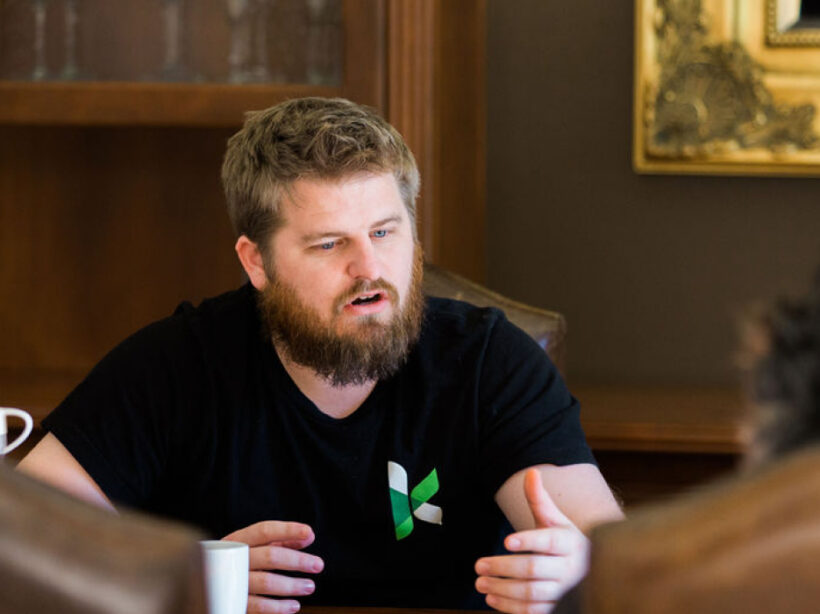Great movies and books have an interesting plot with characters who evolve through the length of the story. Those stories capture the reader or viewer, engaging them on an emotional level as they get invested in the journey of the character.
But good stories aren’t relegated only to books or to movie creators. Your organization likely has some pretty interesting stories to tell; why it exists, who it serves, and how they are served. By writing your organization’s story and gaining an emotional connection with your audience, you can keep them engaged, and create excitement to tell others about you. The way you frame yourselves in the eyes of your audience can be a powerful thing!
At Kanopi, we think the most engaging websites use storytelling as much as possible. This is why with each project we map out our client’s audience segments in Customer Decision Journeys (CDJ), with the goal of determining the right, custom approach to push those audiences through each step of the story, eventually leading to whatever conversion is appropriate for your website. And beyond that, the ultimate goal is advocacy, where they become brand ambassadors for you and spread the word to their peers..
Start with the story.
We are big fans of the book and methodology written by Donald Miller called “Building a StoryBrand” which outlines a simple storytelling framework that works if you apply it to most of the great stories in movies and literature:
A character who wants something encounters a problem before they can get it. At the peak of their despair, a guide steps into their lives, gives them a plan, and calls them to action. That action helps them avoid failure and ends in a success. [1]
But why limit it to entertainment? This framework can also help you to write your organization’s story! Kanopi workshops with our clients through this framework to support them as they write a compelling narrative to their audience.
The below principles will define the areas above in bold.
StoryBrand Principles [2]
- The customer is the hero, not your brand.
- What barriers/hurdles does your customer face to resolve? Define your hero’s three types of problems: Internal, External, and Philosophical.
- Companies tend to sell solutions to external problems, but customers buy solutions to internal problems. Identify the internal, external, and philosophical problem that needs solving. Define your offer.
- Customers aren’t looking for another hero; they’re looking for a guide. Establish yourself as the trusted guide. Identify and fill story gaps with your solves.
- Customers trust a guide who has a plan. Construct a visualized representation of your plan.
- Customers do not take action unless they are challenged to take action — what would happen if they do not work with you? Give them appropriate and easy ways to take the ‘next step.’
- Every human being is trying to avoid a tragic ending. Understand your “villains” and what would happen to the hero without you.
- Never assume people understand how your brand can change their lives. Tell them. Be clear with the actions to progress the hero.
Some of these principles have been historically known by marketers, but remembering #1 in particular helps to start the foundation of your messaging. Understanding how each of these principles applies to your business will help your organization become the perfect guide for your customers.
But personally, what I find extra insightful is identifying #3:
“Companies tend to sell solutions to external problems, but customers buy solutions to internal problems. Identify the internal, external and philosophical problem that needs solving.”
Breaking down the internal, external and philosophical problem is key.
Let’s break this one down a bit further:
External problem:
Description: “In literature, a villain’s job is to wreak havoc on the hero, to place barriers between them and their desperate desire for stability. But ill intentions are not enough. Something, that is, some thing (or things) must represent this barrier.” [3]
This problem is really why your organization exists. What barriers do your customers experience? If you’re a cleaning service that only uses organic cleaning products, the external problem you fix is a dirty home.
Internal problem:
- Description: “In almost every story, the hero struggles with the same question “Do I have what it takes? This question can make them feel frustrated, incompetent, and confused. What stories teach us is that people’s internal desire to resolve a frustration is a greater motivator than their desire to solve the external problem.” [4]
Remember: customers buy solutions to internal problems. If you’re the organic house cleaning business, your customer’s internal problem could be embarrassment over a dirty home. They might not feel that they can have company over, lest they be judged for their housekeeping skills.
Philosophical problem:
This is my favorite part: taking a stand against a larger issue within your industry!
- Description: “The philosophical problem in a story is about something even larger than the story itself. It’s about the question why.” [5]
Is there a larger purpose to which your brand contributes? A cleaner house make customers feel a certain way, and certainly they can feel good about using an organic cleaning service means they’ve cut down on chemicals and helped the environment.
To me, the internal / external / philosophical problem step is the most critical and exciting piece of the StoryBrand framework: if you can clearly identify — and clearly state for your customers — the internal, external and philosophical problem that needs solving, you are way ahead of most of your competition.
Be the best guide you can be.
Think of all the greatest brands out there, and most of them are completely dialed in to their story. They know how they help their customers avoid obstacles, and ultimately succeed . . . with their brand helping guide them of course.
At Kanopi, we love a strategic approach. Resources like StoryBrand expand our ability to help our clients’ and their websites reach their full potential. Connect with us to learn more about how we can help you be the best guide you can be.
[1], [3], [4], [5] Building a StoryBrand — Donald Miller
[2] Building a StoryBrand — Donald Miller, slightly adapted by Kanopi Studios









